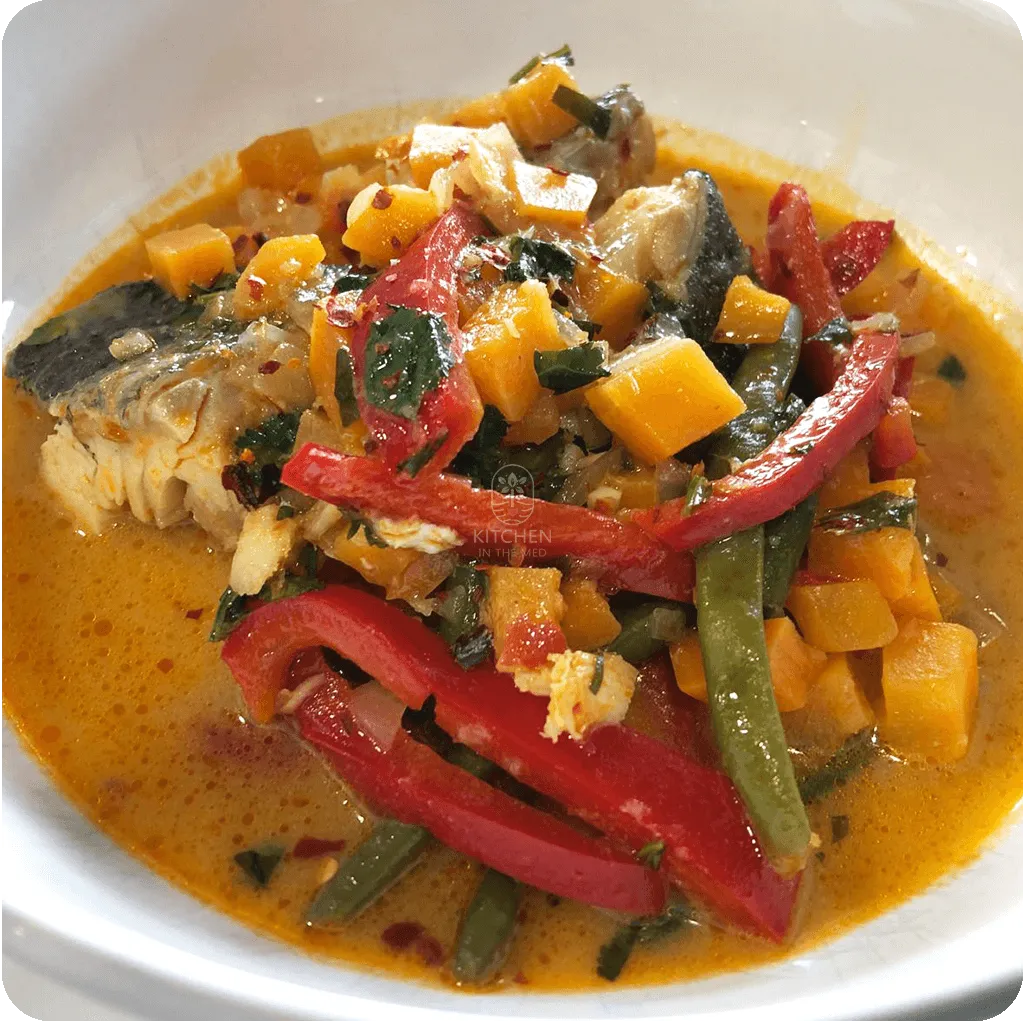5 Cooking Habits That Are Secretly Ruining Your Health
Are your cooking routines silently sabotaging your health? You might think you’re a kitchen rockstar, but some of your go-to tricks may do more harm than good. Don’t worry—you’re not alone. Many of us develop habits that seem harmless (or even helpful) but carry hidden health risks.
This post will unmask five common cooking practices that can sneakily impact your well-being. Backed by research and expert guidance, these tips will help you take small but powerful steps toward healthier meals.
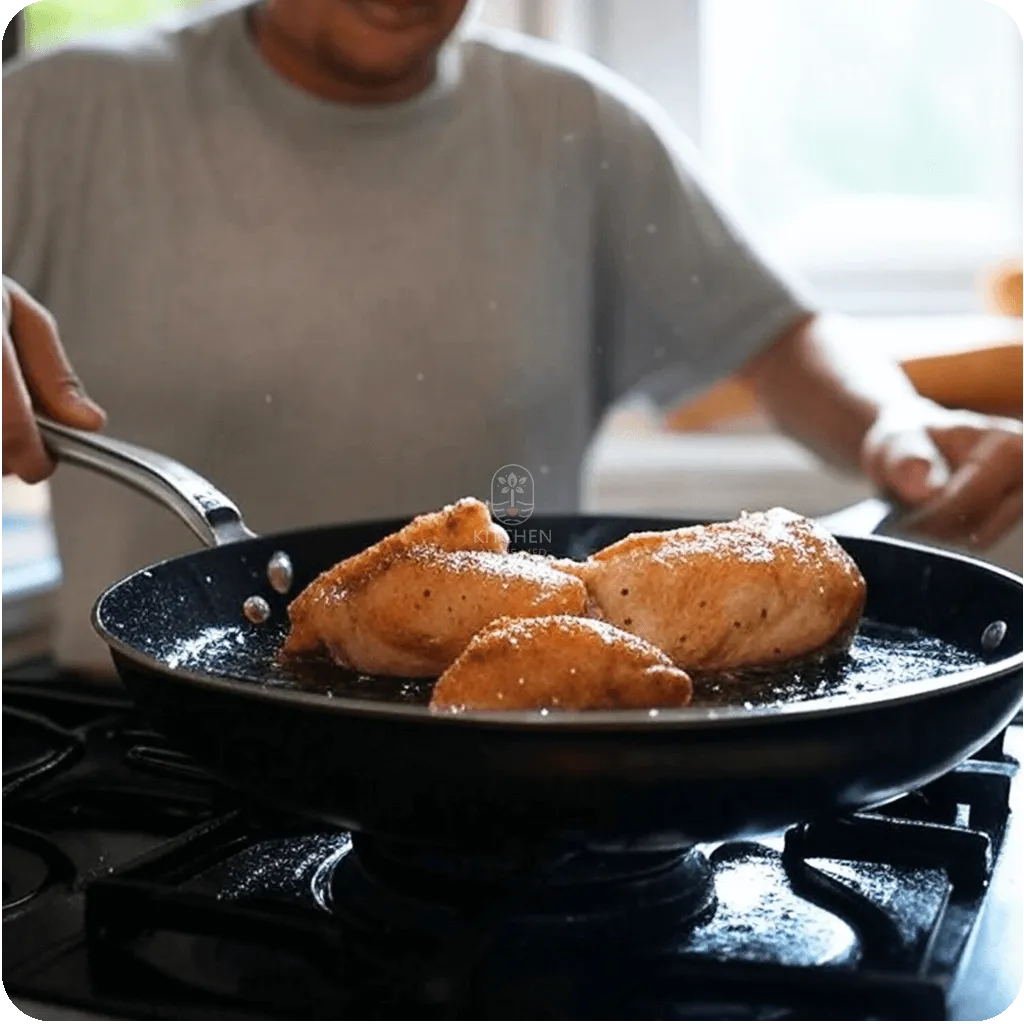
Frying Chicken in a Pan by Kitchen in the Med
Share this article
1. Over-Salting: A Pinch Here, A Pinch There
Does your hand hover automatically over the salt shaker? While salt adds flavor, too much can quietly damage your health.
According to the Centers for Disease Control and Prevention (CDC), the average American consumes over 3,400 mg of sodium daily, well above the recommended limit of 2,300 mg. Worse, the American Heart Association suggests a more ideal target of 1,500 mg daily for most adults.
Health risks include:
- High blood pressure
- Increased risk of heart disease and stroke
- Kidney damage over time
What to do instead:
- Flavor with fresh herbs like basil, cilantro, thyme, or rosemary.
- Add acid (like lemon juice or vinegar) to brighten flavors without salt.
- Use spices like smoked paprika or cumin for depth.
Example: Try seasoning roasted vegetables with garlic, rosemary, and a squeeze of lemon instead of salt-heavy spice blends.
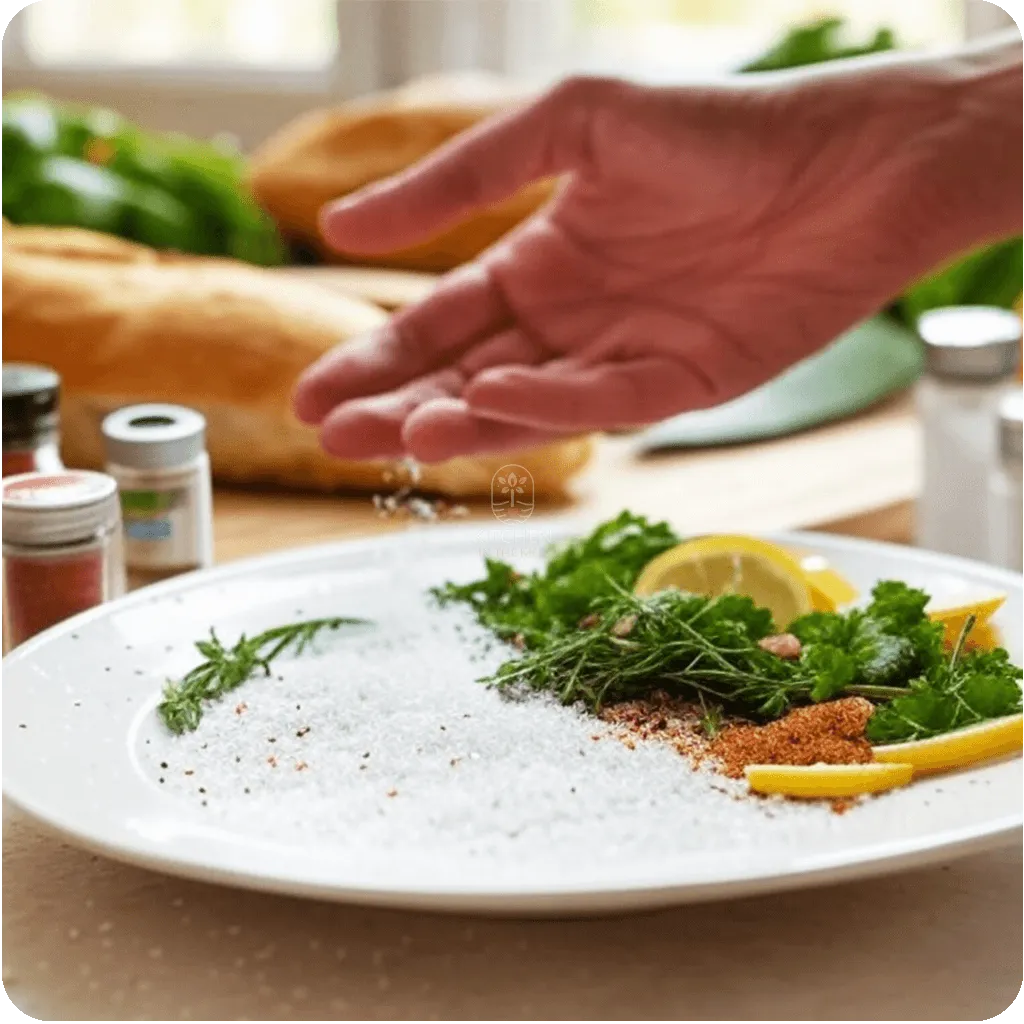
Too Much Salt by kitchen in the Med
2. Frying Everything: Crispy Isn’t Always Best
There’s no denying the satisfying crunch of fried food. But deep-frying—especially with reused oils—introduces harmful trans fats and advanced glycation end products (AGEs), both linked to chronic disease.
A long-term study published in the BMJ (2019) found that women who ate one or more servings of fried food per day had a significantly higher risk of heart-related death.
Health concerns include:
- Obesity
- Coronary artery disease
- Type 2 diabetes
What to try instead:
- Air frying uses 75–80% less oil and still delivers crunch.
- Roasting or grilling creates flavorful browning (Maillard reaction) with less fat.
- Sautéing with minimal oil or broth helps retain texture and nutrition.
Example: Make oven-baked sweet potato fries brushed with olive oil and sprinkled with smoked paprika.
3. Skipping Measurements: Cooking Isn’t Just Art
Freestyling in the kitchen feels creative, but eyeballing ingredients—especially oils, cheeses, and sauces—can lead to calorie overload. Portion distortion is a big reason people unintentionally eat more than they think.
The National Institutes of Health (NIH) emphasizes that accurate portion sizes are crucial for weight management and metabolic health.
Common issues:
- Overpouring oils (1 tablespoon = ~120 calories)
- Overserving pasta or rice
- Excessive sugar in “just a splash” of syrup
Solutions:
- Use a food scale and measuring cups for calorie-dense ingredients.
- Pre-portion snacks and condiments.
- Follow serving size guidelines, especially for packaged items.
Example: Instead of pouring olive oil straight from the bottle, measure one tablespoon to sauté vegetables.
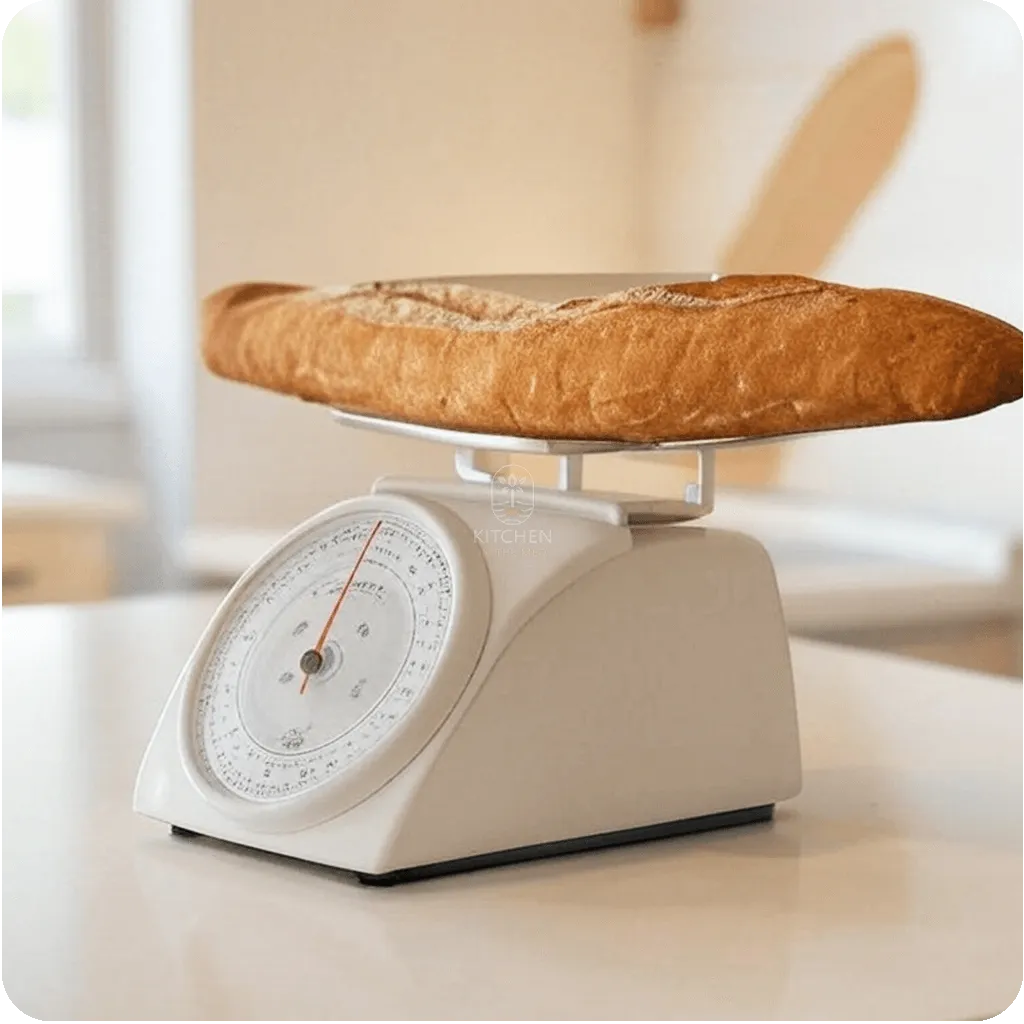
Baguette on a Kitchen Scale by kitchen in the Med
4. Cooking with Sugary Sauces: Hidden Culprits
Store-bought sauces—think teriyaki, BBQ, and sweet chili—are loaded with added sugars, often listed under names like high-fructose corn syrup, cane juice, or maltodextrin.
According to the U.S. Food & Drug Administration (FDA), added sugars should make up less than 10% of your daily calories. Yet many sauces contain 6–12 grams of sugar per tablespoon—almost a third of your daily limit in just a few spoonfuls.
Long-term risks:
- Weight gain
- Insulin resistance
- Increased risk of fatty liver disease
What to do instead:
- Make sauces from scratch with fresh ingredients.
- Use natural sweeteners like dates, honey (in moderation), or mashed fruit.
- Read nutrition labels carefully.
Example: Blend tomatoes, garlic, olive oil, and a touch of balsamic vinegar for a simple, sugar-free pasta sauce.
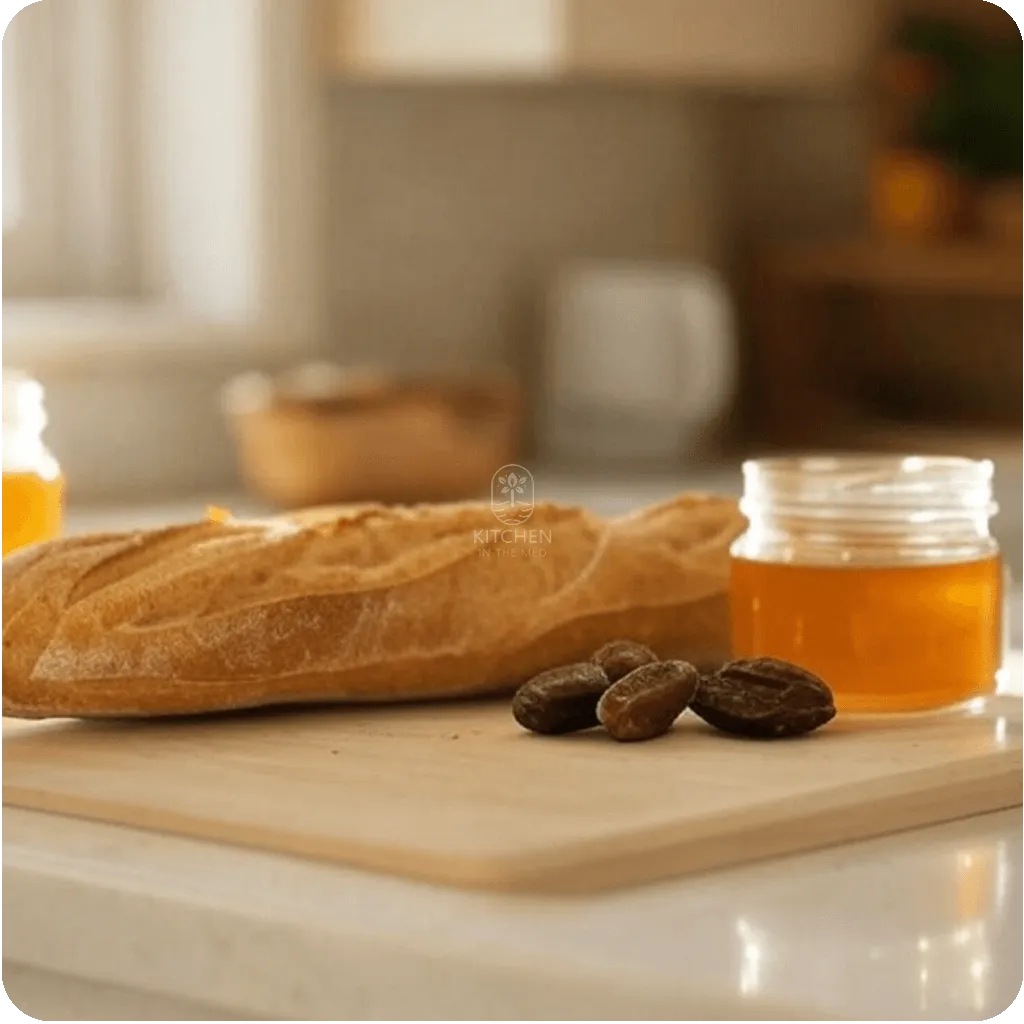
Baguette Honey and Dates by kitchen in the Med
5. Ignoring Leftover Potential: Not Just for Lazy Days
Throwing away leftovers wastes not only food but also nutrients and money. The U.S. Department of Agriculture (USDA) reports that 30–40% of the American food supply goes to waste—much of it right in our homes.
Wasted food = wasted health opportunities. Many leftovers retain nutritional value and can be reimagined into creative, balanced meals.
Smart reuse tips:
- Turn leftover roasted veggies into soups or grain bowls.
- Use cooked chicken for sandwiches, tacos, or salads.
- Freeze single portions for quick meals later.
Example: Stir leftover quinoa and roasted veggies into a skillet with eggs for a hearty breakfast hash.
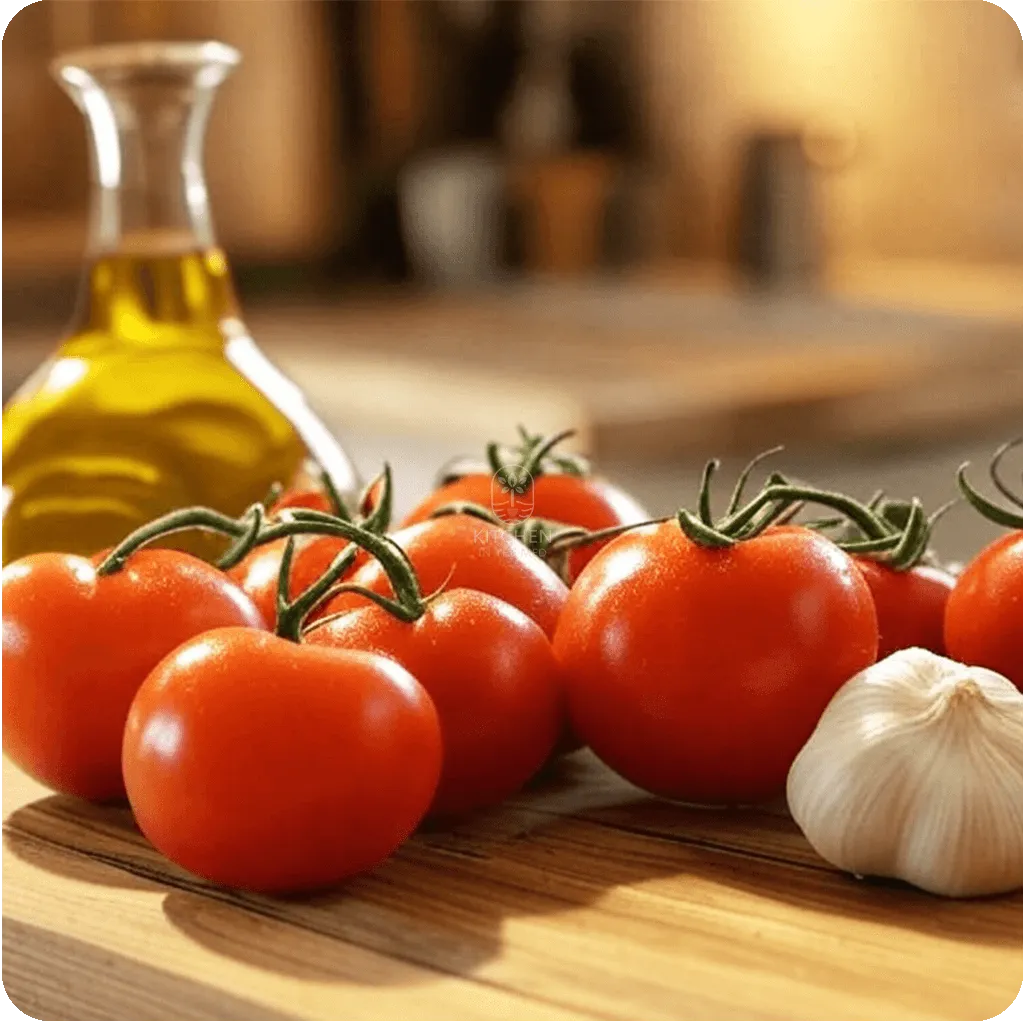
olive Oil Tomatoes and Garlic by kitchen in the Med
Embrace Better Cooking Habits for Healthier Living
These five small but mighty habits might initially seem harmless—but changing them can make a meaningful difference. With a few tweaks, you can protect your heart, cut unnecessary sugar and sodium, and create a healthier food environment in your home.
Remember: Healthier cooking doesn’t mean boring cooking. It just means being a little more mindful and a lot more empowered.
Main Sources I used in This Article
CDC – Sodium and Your Health
American Heart Association – Recommended Sodium Intake
BMJ Study – Fried Food Consumption and Mortality (2019)
National Institutes of Health – Portion Sizes and Eating Habits
Journal of the Academy of Nutrition and Dietetics
USDA – Food Waste FAQs
Share this article
Welcome to Kitchen in the Med!
I’m Alberto, born and raised in Barcelona, Spain, a principal city in the Mediterranean.
Here, I share authentic, easy-to-follow recipes inspired by the rich flavors of my home. You’ll find wholesome, time-honored dishes, expert cooking tips, and ingredient guides to help you bring the Mediterranean diet and other dishes to your kitchen—regardless of where you live.
You can also follow my quest to find a small plot of land to live and grow a garden in the Med.

